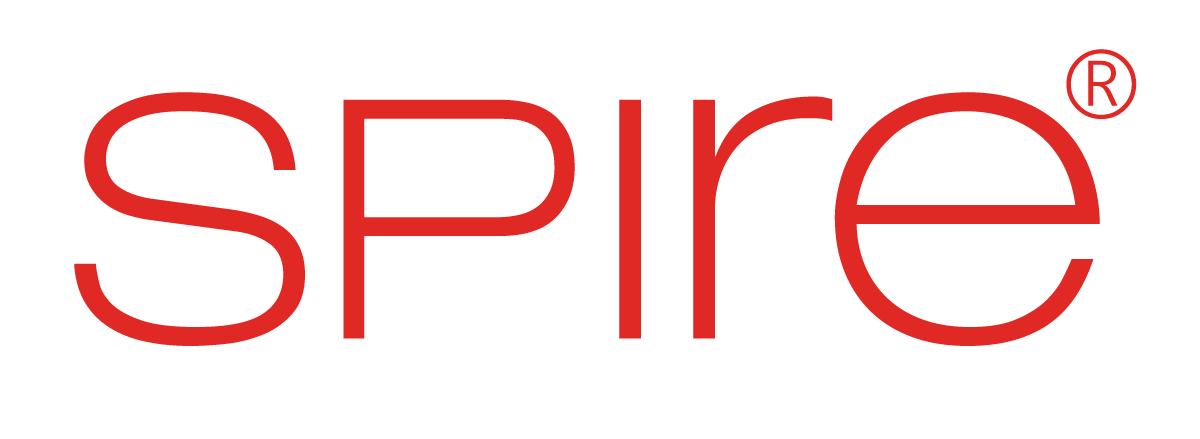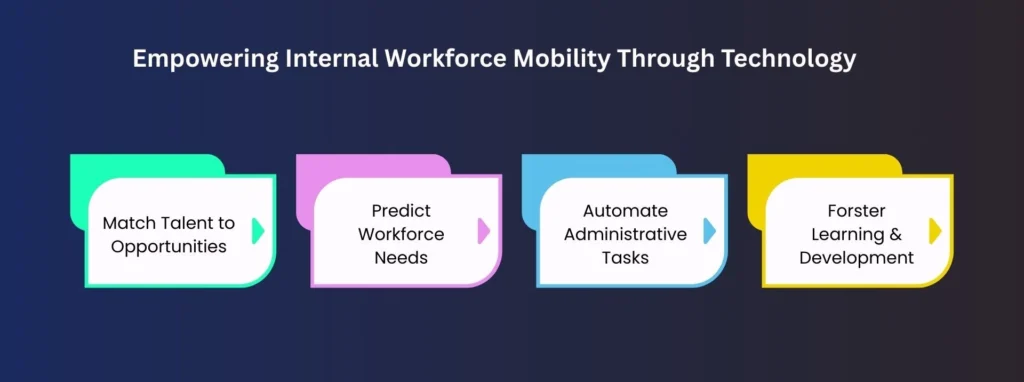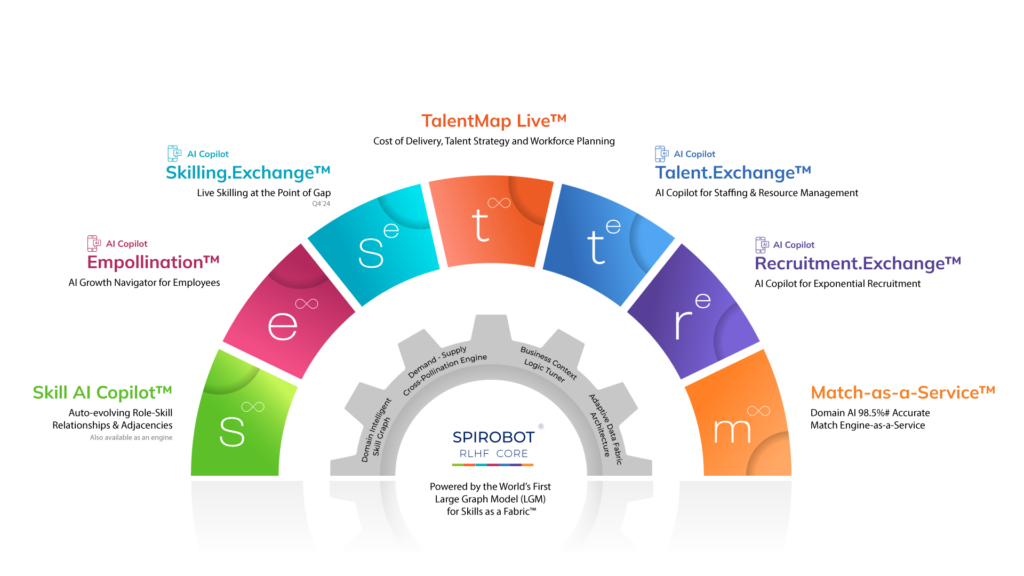In today’s professional environment, employees expect more than a paycheck. They seek growth, purpose, and the ability to chart their career paths within their organizations. Concurrently, businesses face an urgent need to retain top talent, reduce recruitment costs, and adapt to evolving market demands. This dual challenge places internal mobility strategy at the forefront of talent management priorities, offering organizations a way to bridge the gap between employee aspirations and organizational goals.
Opportunity marketplaces have emerged as a powerful tool for transforming internal mobility strategies. These platforms act as internal talent ecosystems, enabling employees to explore new roles, projects, or learning opportunities within their current organizations. For employers, they present a pathway to retain talent, redeploy skills effectively, and maximize return on investment (ROI) in human capital.
In this blog, we delve into the critical aspects of redefining internal mobility strategies through opportunity marketplaces and why it’s a win-win solution.
Defining Opportunity Marketplaces
Opportunity marketplaces are digital platforms that provide employees with access to a wide range of internal opportunities.
- New roles
- Temporary projects
- Skill development programs
- Lateral movement options
The idea is to create a transparent, accessible space where employees can view and apply for opportunities within their current organization, rather than looking externally for career growth.
At their core, opportunity marketplaces facilitate internal mobility by providing employees with a structured and efficient way to explore career progression pathways. They are not just job boards within the company; rather, they combine various elements of workforce management, including skills mapping, project management, and career development into one cohesive platform. By doing so, they foster a culture of continuous learning and growth, enabling employees to upskill, reskill, and navigate their career trajectories within the organization.
From an organizational perspective, opportunity marketplaces provides a strategic solution that helps companies retain top talent, fill roles faster, and save on external recruitment costs. These solutions help businesses make more effective use of their existing workforce, avoiding the high costs associated with talent shortages and hiring new employees. As employees grow, so does the organization—creating a more resilient and agile business that is better equipped to adapt to future demands.
Reevaluating Internal Mobility: Its Significance in the Modern Age of Work
Internal mobility is more than just the ability to move employees between departments or positions. In today’s work environment, it involves creating clear, accessible, and transparent pathways for employees to grow, adapt, and thrive within an organization. This requires a fundamental shift in how companies think about talent management. It’s no longer enough to rely on static job descriptions or traditional career ladders.
In the modern age of work, where employees seek greater control over their careers, career development and internal mobility are seen as top priorities. According to a 2023 study by LinkedIn, 94% of employees would stay longer at a company that invested in their career development. This highlights the importance of offering diverse, dynamic career opportunities to retain and engage top talent. Opportunity marketplaces, which help employees move laterally or progress vertically within an organization, are key in supporting this need for mobility.
1. Employee Expectations: Beyond Traditional Roles
Traditional career paths, defined by rigid hierarchies and siloed functions, no longer resonate with the modern workforce. A LinkedIn report on workplace trends revealed that 63% of employees prefer growth opportunities within their current organizations to pursue external options. However, many feel stymied due to a lack of transparency about available roles or pathways for advancement.
2. Organizational Challenges: Retention, Cost Optimization and More
Although the intent to provide internal mobility is present in many organizations, actualizing it, presents significant challenges.
- Retention Challenges: Despite efforts to retain talent, organizations often struggle due to a lack of visibility into employees’ career aspirations. Opportunity marketplaces allow employees to view clear paths within their current organization, aligning their long-term goals with available opportunities and increasing retention.
- High Recruitment Costs: The cost of hiring externally is substantial. The Society for Human Resource Management (SHRM) estimates that replacing an employee can cost up to 33% of their annual salary. Organizations often incur these high costs due to the inability to leverage internal talent effectively. Opportunity marketplaces reduce reliance on external hiring by offering a clear and organized way for employees to move internally, thereby cutting recruitment expenses.
- Stagnation in Roles: Many employees feel stuck in their current roles, unable to advance or explore new challenges within the company. This stagnation leads to dissatisfaction, which in turn increases turnover. Internal mobility through opportunity marketplaces ensures employees can pursue new roles or projects, reducing burnout and boosting engagement.
- Poor Visibility: In many organizations, employees have limited visibility into the full range of internal opportunities. Even when roles or projects are available, they are not always advertised or easily accessible. Opportunity marketplaces solve this issue by making roles, projects, and growth opportunities transparent and easy to navigate for employees, ensuring that talent is not overlooked and that employees have a clearer path to progress.
Many organizations recognize the importance of internal mobility but fail to capitalize on it due to a lack of infrastructure. Opportunity marketplaces provide the necessary technology and structure to bridge this gap, creating a more agile workforce that is better able to meet changing business needs.
3. Skills Alignment in the Age of Change
As industries evolve, the skills required for various roles shift rapidly. With the rise of advanced AI, Gartner’s 2024 predictions emphasize that around 80% of the engineering workforce will need to reskill or upskill by 2025 to meet emerging demands. Internal mobility strategies can enable organizations to redeploy existing talent effectively, filling skill gaps without extensive external hiring.
Technology as a Catalyst for Opportunity Marketplaces
Opportunity marketplaces revolutionize the internal mobility landscape by creating a transparent and accessible system for employees to identify and pursue new opportunities. These platforms function as centralized hubs for internal roles, projects, gigs, and learning modules, underpinned by advanced technology such as artificial intelligence (AI) and Large Graph Model (LGM) for Skills.
Expanded Insights into Technology’s Role
The technological backbone of opportunity marketplaces is what sets them apart from traditional career progression methods. By integrating advanced technologies like advanced Domain-AI, Large Graph Model (LGM) for Skills, and real-time data analytics, these platforms provide dynamic, personalized career pathways for employees.
- Matching Talent to Opportunities: AI-powered algorithms analyze employee profiles, skill sets, and aspirations to suggest relevant roles or projects. These algorithms consider multiple data points, such as career history, competencies, and preferences, to provide tailored recommendations. This personalized approach not only aligns individual career goals with organizational needs but also increases employee engagement and satisfaction.
- Skill Gap Analysis: Opportunity marketplaces leverage Domain-AI to conduct skill gap analyses, providing both employees and organizations with a clear view of the skills that are currently in demand and the areas where employees need to develop. This insight allows employees to take proactive steps toward acquiring the skills they need for future opportunities. For organizations, this analysis helps identify where to focus training and development resources, ensuring that the workforce is equipped for current and future challenges.
- Skilling at the Point-of-Gap: The concept of Skilling at the Point-of-Gap involves providing employees with training and development resources precisely when they need them. For instance, if an employee expresses interest in a new role that requires a specific technical skill, the platform can immediately recommend relevant online courses, vidoes and learning modules to fill that gap. This approach ensures that employees are always prepared for the next step in their career progression without delay.
- Career Pathing: Opportunity marketplaces also offer robust career pathing capabilities. By combining employee data with organizational needs, these platforms provide employees with clear career trajectories, showing them where they are today and where they can go in the future. Career pathing is more than just a visual map, it provides real-time suggestions, such as new roles, skill-building opportunities, and lateral moves that align with long-term career goals. By offering actionable insights, opportunity marketplaces help employees understand the steps they need to take to advance within their organization.
When these features are combined—skill gap analysis, skilling at the point-of-gap, and career pathing; opportunity marketplaces give employees the clarity and direction they need to navigate their career progression.
- Predict Workforce Needs: Analytics tools within opportunity marketplaces provide predictive insights into workforce trends. They help organizations identify skill gaps, assess future role requirements, and plan for talent redeployment well in advance. By forecasting needs, organizations can ensure a steady pipeline of skilled employees ready to fill critical roles as they emerge.
- Automate Administrative Tasks: These platforms significantly reduce manual effort in managing internal mobility processes. Automation capabilities streamline tasks such as job posting, candidate matching, application tracking, and feedback collection. This efficiency allows HR teams to focus on strategic activities like workforce planning and employee development.
- Fostering Learning and Development: Opportunity marketplaces integrate learning management systems (LMS) or offer personalized upskilling pathways. These features ensure employees have access to the resources they need to develop skills for future roles.
By encouraging continuous learning, these platforms cultivate a growth-oriented culture and prepare employees for long-term success.
Organizations that leverage advanced AI and robust data analytics take a significant leap forward in aligning talent strategies with organizational goals. These solutions can maximize the value of internal talent by enabling smarter decision-making and more agile workforce planning.
Spire.AI: Enabling Internal Mobility Transformation
Organizations seeking to implement or enhance their internal mobility strategy can benefit from Spire.AI’s innovative solutions. Spire.AI leverages Domain-Intelligent AI and data analytics to power comprehensive opportunity marketplaces tailored to organizational needs.
Spire.AI Key USPs
AI-Driven Talent Matching
Spire.AI’s algorithms ensure precise alignment of employee skills, aspirations, and opportunities, making internal mobility seamless and efficient. By forming comprehensive employee skill profiles, Spire.AI takes into account a combination of factors, including past roles, performance history, learning progress, and other relevant data. These profiles allow the platform to evaluate employees’ skills and proficiency levels across various parameters.
Spire.AI’s dynamic approach matches these skills to the requirements of open opportunities within the organization. If the match is perfect, the system directly directs the employee to apply. However, if there are gaps between the employee’s current skills and the role’s requirements, the platform charts out a development path.
This path identifies the skill gaps and provides recommendations for upskilling, thereby ensuring that the employee is equipped for the opportunity in the future. This process of skill identification and bridging is the foundation of Spire.AI’s learning matrix, which offers a clear roadmap for employees to develop and prepare for future career opportunities.
This tailored approach ensures that talent is not only used effectively but is also provided with the necessary tools and resources for continuous growth. By leveraging Spire.AI’s intelligent matching and learning matrix, organizations can optimize their internal mobility processes, reduce skill gaps, and enhance employee satisfaction and retention.
Skill Development Recommendations
The platform integrates targeted upskilling opportunities directly into its ecosystem. Spire.AI suggests personalized learning paths based on the skills employees need for future roles. With options ranging from short online courses to in-depth certifications, employees can prepare themselves for advancement, ensuring a steady pipeline of qualified candidates for internal positions.
Real-Time Workforce Analytics
Spire.AI provides intuitive dashboards offering actionable insights into workforce trends, skill gaps, and mobility metrics. These analytics enable HR and talent leaders to make informed decisions about talent deployment, succession planning, and organizational development.
The ability to monitor key indicators in real time helps organizations remain agile and responsive to both employee needs and market demands.
Customizable Interface
The platform’s design is adaptable to organizational structures and processes, ensuring seamless integration with existing CRMs, ERPs, and HR systems. From branding elements to workflow customizations, Spire.AI ensures that the platform reflects the unique identity and operational requirements of each business. This flexibility makes it a versatile solution suitable for a wide range of industries and company sizes.
Why Choose Spire.AI?
- Domain-Intelligent AI: Spire.AI’s Domain-Intelligent algorithms understand industry-specific challenges and roles, enabling precise talent matching and demand forecasting. This specialization ensures organizations benefit from tailored solutions that drive measurable impact.
- Precision and Efficiency: With Spire.AI solutions, organizations can map the right opportunities to the right employees, reducing mismatches and inefficiencies.
- Scalability for Growth: Whether for small teams or global enterprises, Spire.AI supports seamless scalability to accommodate evolving business needs.
- Improved Retention and Engagement: Organizations using Spire.AI report improved retention rates, enhanced employee satisfaction, and optimized talent deployment.
- Proven ROI: Spire.AI’s solutions not only reduce recruitment costs but also maximize the ROI of internal talent by enhancing workforce utilization and productivity. Its advanced analytics provide organizations with a clear picture of their talent ROI, reinforcing the platform’s value.
The Path Forward: Implementing Opportunity Marketplaces
To remain competitive and relevant, organizations must prioritize internal mobility strategies anchored by opportunity marketplaces. However, successful implementation requires a structured and strategic approach.
6 Steps To Building an Effective Opportunity Marketplace
Step 1: Assess Current Practices
Begin with a comprehensive evaluation of existing internal mobility initiatives. Identify gaps in transparency, accessibility, and technology integration.
Step 2: Define Objectives
Establish clear goals for the opportunity marketplace, such as improving retention, filling skill gaps, or increasing engagement.
Step 3: Invest in the Right Technology
Choose a scalable, user-friendly platform like Spire.AI that integrates seamlessly with existing LMS, ERPs, CRMs, and HR systems, and offers robust analytics.
Step 4: Engage Leadership and Stakeholders
Secure leadership buy-in and ensure alignment with broader organizational strategies. Communication is critical to building support across departments.
Step 5: Promote Awareness and Accessibility
Conduct training sessions and internal campaigns to educate employees about the platform and its benefits. Ensure that opportunities are visible and easily accessible to all.
Step 6: Monitor and Refine
Use data-driven insights to track the platform’s performance, measure impact, and make iterative improvements.
Unlocking Long-Term Benefits With Spire.AI
Platforms like Spire.AI empower employees to take charge of their careers while enabling organizations to unlock the full potential of their workforce. By leveraging advanced technologies like Domain-Intelligent AI, and fostering a culture of growth, organizations can achieve the dual goals of employee satisfaction and organizational success.
By adopting an opportunity marketplace, organizations can foster a culture of growth and agility. Employees feel empowered to navigate their career paths, while employers benefit from a more engaged, skilled, and loyal workforce. These platforms ensure that talent management evolves from a transactional process to a strategic advantage.
With Spire.AI’s solutions, organizations have the tools to transform their internal mobility practices, ensuring they remain agile, innovative, and positioned for sustainable growth. Now is the time to embrace this transformative approach, making internal mobility a cornerstone of talent strategy.







